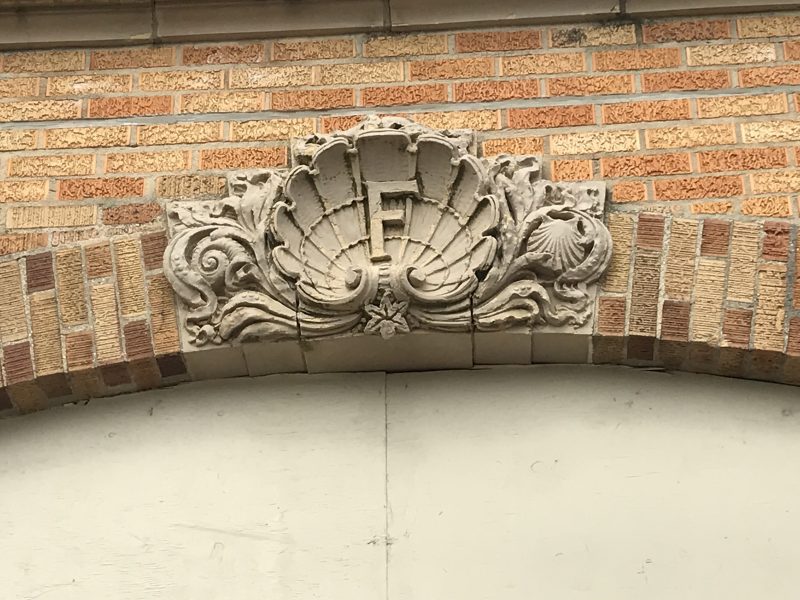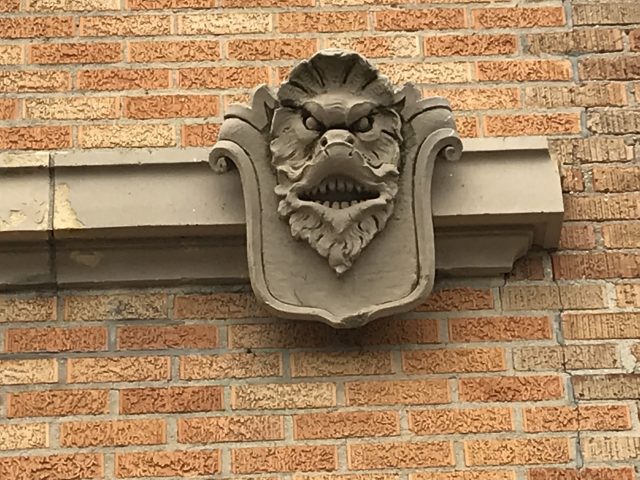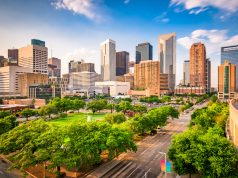By Tim Kelly
You’ve undoubtedly passed them, probably without much notice, if you’re an Ocean City resident or visitor.
They’ve been around for almost a century, standing sentry over one of the city’s best-known landmarks.
They are the gargoyles of the Flanders Hotel, some of the most unique architectural elements of the 96-year-old building.
Gargoyles are small statues of mythical monsters that adorn many historic buildings throughout the world. There were popular for centuries. Until the 1960s, gargoyles were said to ward off evil spirits.
“Because they were supposed to stand up to these spirits, they made them look mean,” said Peter Voudouris, director of operations of the Flanders Hotel at 11th Street and the Boardwalk.
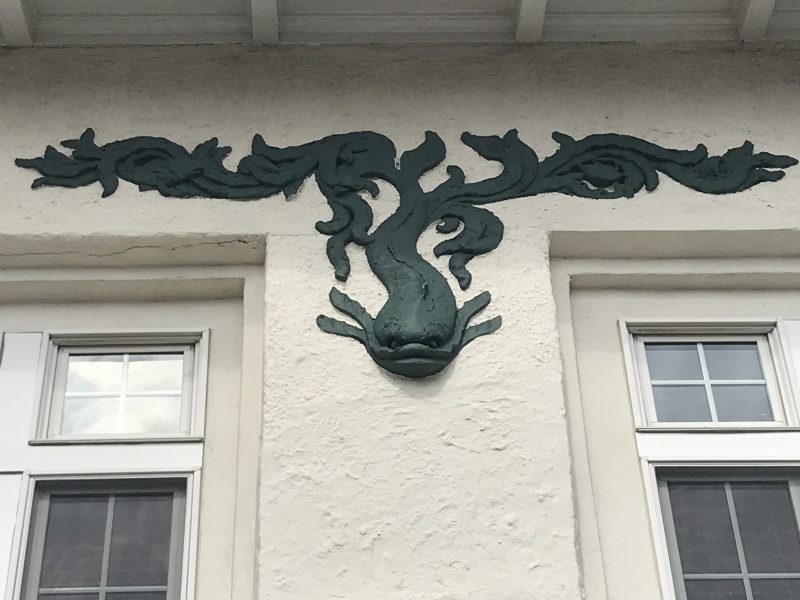
At the Flanders, the gargoyles have an Ocean City flair: many are depicted as grotesque “fish monsters.”
The statues can be found decorating the walls of the nine-story, 117-unit hotel, and also inside at Emily’s Ocean Room restaurant.
There, two of the fish statues flank the sides of the restaurant’s new fireplace. Their faces are contorted into an evil smile, showing menacing teeth.
Alex Bethke is a local historian who helped Voudouris research the building and its many quirky features and who spearheaded the effort resulting in the building being placed on the National Register of Historic places.
“Alex told me our building’s architect was very enamored by the Marlborough-Blenheim Hotel in Atlantic City. That building had many gargoyles,” Voudouris said of the Atlantic City landmark built in 1906 and demolished in 1978.
The architect, Vivian Smith, of Philadelphia, who also designed Ocean City’s Music Pier and the Chatterbox restaurant, placed numerous gargoyles and other ornamental cement elements onto the hotel’s walls.
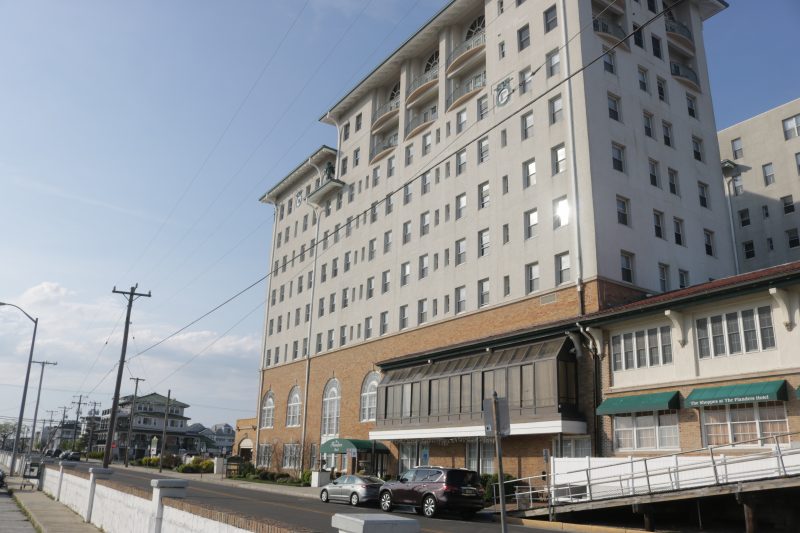
The exact number of gargoyles at the Flanders is unknown, according to Voudouris. “That’s a good question,” he said. “Many of them are not obvious. You have to look for them. Once you start finding them, you realize there are a lot.”
Voudouris said many sculptors and architects of the era created gargoyles and other ornamental elements to reflect the building’s surroundings. Hence, the Flanders’ depictions of fish, lobsters, crabs, ships and sea shells.
Though pleasing or interesting to the eye, the gargoyles have a functional purpose as well.
“They are placed on the sides of buildings to protrude out and divert rainwater away from the walls,” Voudouris said. “The rainwater hits the statue and rolls off its front, and not straight down the walls.”
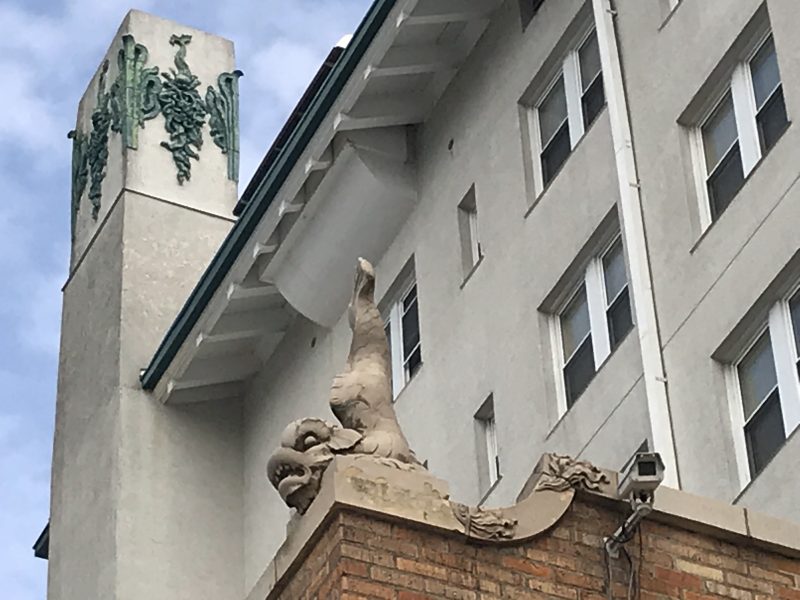
Many of the gargoyles are strategically placed around the building’s windows. From ground level they appear to be fancy trim. Upon closer inspection, the mythical creatures emerge. Those particular gargoyles are painted a dark green color, as they were originally, Voudouris said.
Others are the natural gray color of the cement. It may be debatable as to their effectiveness against evil spirits, but not their ability to withstand wind-blown sand, hurricanes, a fire and Superstorm Sandy.
“I had a cement guy here doing some repair work and he was marveling at the durability of the figures,” Voudouris noted. “He said they mixed cement a lot differently (when the Flanders was built). They mixed it to last. Those figures have stood the test of time.”
A visual tour of the Flanders reveals the aforementioned gargoyles, and also many examples of the Flanders crest.
Voudouris said he expects a large crowd of celebrants for the annual Mother’s Day brunch at the property. Those planning to attend might want to look skyward at the building and check out one of Ocean City’s less appreciated visual treats.
